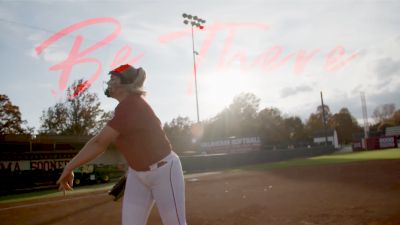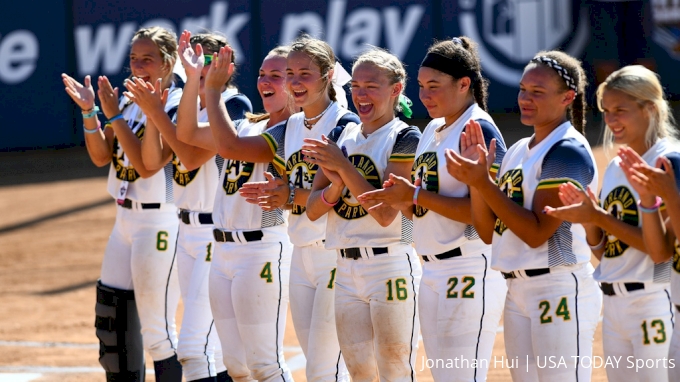Building A Softball Player From The Ground Up By S2 Breakthough
Building A Softball Player From The Ground Up By S2 Breakthough
A Series on Establishing a Youth Player Development Model by S2 Breakthrough: Building A Softball Player From The Ground.

A Series on Establishing a Youth Player Development Model by S2 Breakthrough featuring Dr. Laura McDonald, Krista Stoker, Ashley Sunshine, and Karli Sewell. www.s2breakthrough.com Follow @S2_Breakthrough
In our introductory post in this series, we established that the growth and longevity of our game are currently being threatened by an ineffective system lacking a holistic approach to player development. While that may paint a bleak picture at first glance, it ultimately presents an opportunity to reframe how we view player development.
Our current youth softball system presents athletes, coaches, and families with challenges that may at times feel overwhelming to address. Often, when we are searching for the answer to player development, we look separately at each silo that exists in a player’s softball journey. Athletes often answer to multiple coaches at the same time: scholastic coach, travel/rec coach, team coach, skill coach, strength coach. Not only does the siloing of the pillars of development create a complicated maze of (often conflicting) information for families to navigate, it also creates an expensive and fragmented system full of overscheduled young athletes with coaches who are lacking the full vision of what is needed to actually provide a multi-year plan for the athlete’s development.
The first step in developing a multi-year plan for athletes is to understand where an athlete is in her physical development. We have to build a system that does not treat a pre-pubescent 10-year-old the same way as a developed 18-year-old. It is clear that through early-specialization and over-training we are creating a generation of athletes who are more prone to injury1,2.
We know that elite softball mechanics involve a series of highly coordinated fundamental movements. If an athlete develops in a system that does not promote the development of these underlying movements before pushing the complex mechanics involved in windmill pitching, overhand throwing and/or hitting at a high volume and intensity, we will cap an athlete’s ability to continue to improve far earlier than we should.
To build a multi-year development curriculum we must ensure that our youngest softball athletes (6 - 12) are entering a system where we prioritize forming their love of the game by providing them with a platform for success. This means we must curb our expectations of what an athlete is capable of by taking into account her physical development and the complexity of the movements involved in softball. It also means we must build a platform that is centered on the longevity of her career.
Our youngest athletes must be involved in a system that:
Prioritizes developing athleticism and fundamental movement. We have to be sure that softball occurs within a limited season to allow our youth athletes to explore other movements in other sports without being over-trained. Additionally, we should have access to a curriculum of standardized warm-ups and practice plans that include age-appropriate skill development.
Understands the complexity of softball skills and limits our expectations of what is developmentally appropriate. We should not be over-cueing and over-isolating mechanics. The more we demand that a young athlete perform a complex movement (such as windmill pitching) mechanically precise, the more we are setting her up for failure and capping her ability to find those movements through her own athleticism. During this timeframe, we should be laying the foundation for acquisition of more complex movements later in her development.
Never compromises the longevity of a player’s career and development for short-sided “success”. If we are building a curriculum around keeping girls in the game and allowing them the greatest chance for future success, we have to stop placing artificial ceilings on them by prioritizing wins and instant gratification at the age of 10. Examples of this in our current system include cutting players from teams pre-puberty, not allowing late bloomers opportunities to pitch because of their small size, over bunting and not teaching young athletes to swing for power, reducing access to play by creating cost barriers through significant travel at young ages. All of these decisions are rooted in the need for instant success rather than long-term development and place an artificial ceiling on an athlete before we fully grasp her potential.
Once an athlete has reached development, the curriculum must begin in an individual assessment of each athlete. Assessments should provide the athlete, and each of the relevant silos, with an evidence-based understanding of how she should train based on her own individual strengths and weaknesses and the skills that are required to be successful in softball.
For example, our Threshold Assessment identifies how the player performs on tasks critical for optimal softball performance: pelvic control, chest-pelvis dissociation, and ground force transfer and measures the biomechanics of an athlete’s skill to identify how the movement capabilities of that athlete translate to her mechanics.
Assessments should serve as a baseline for where an athlete should begin her training and as a guide to connecting all of the facets (hitting, throwing, strength, approach, strategy) into one cohesive plan forward. They should also serve as a starting point for players to understand their potential and for coaches to approach skill training with the appropriate expectation for what athletes can and cannot do and how best to approach their development.

It is possible to incorporate assessments on a large scale to help build a more efficient system for our athletes. In addition to our work at S2 Breakthrough, we oversee the Orland Park A’s organization which incorporates assessments on our high school level teams and then places them into individual training programs. Alternatively, team coaches could learn assessments to incorporate within their own team, or parents could seek out assessments for their individual daughters.
It is important that we begin to demand these changes in our game. For families, ask for your organization’s long-term development plan. For coaches, build one. For organization leaders, tournament directors, governing bodies, and other leaders and influencers of our game, examples exist of youth sports making positive steps to start building an approach and curriculum to place our youngest athletes in a system that makes sense and keeps them in the game as long as possible and that helps our older athletes have the tools to achieve their full potential3.
In our next article, we are excited to dive into what training looks like in a cohesive model where a multi-year approach is taken, and all silos are communicating with one another.
Bell DR, Biese KM, Post EG, et al. Sport Specialization Is a Risk Factor for Overuse, But Not Acute, Lower Extremity Injuries: a Prospective Study. Orthopaedic Journal of Sports Medicine. 2019;7(3_suppl):2325967119S0011. doi:10.1177/2325967119S00111
Jayanthi NA, LaBella CR, Fischer D, Pasulka J, Dugas LR. Sports-Specialized Intensive Training and the Risk of Injury in Young Athletes. The American Journal of Sports Medicine. 2015;43(4):794–801. doi:10.1177/0363546514567298
https://www.admkids.com/, https://www.uslacrosse.org/athlete-development, https://softball.ca/programs/canpitch